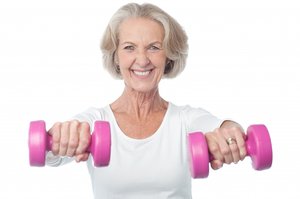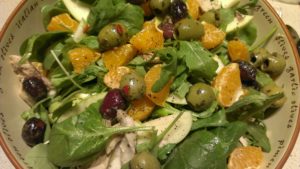When it comes to eating healthy, losing weight or maintaining your current weight, you are more likely to be successful if you make small changes over time rather than changing your entire diet all at once. The long term goal is to feel good, have more energy, and reduce the risk of cancer and disease. Here are a few simple changes you can do to work towards a healthier diet.
Start Your Day with a Good Breakfast
A nutritious breakfast gets you fuelled for the day and helps prevent you from binging later in the day. Easy-to-prepare breakfasts include cold cereal with fruit and low-fat milk, whole-wheat toast with scrambled eggs, yogurt with fruit, or porridge with raisins.
Eat Plenty of Whole Grains, Fruits & Vegetables 
Try brown rice instead of white rice and whole wheat pasta instead of regular pasta. Aim for five servings of fruits and vegetables each day. A cup of salad counts as one vegetable, so try eating a salad with either lunch or dinner (choose low-calorie, low-fat or fat free dressing options).
Stay Hydrated Throughout Your Day
A regular fluid intake from our daily diet is crucial to maintain good health. Even if your goal is to lose weight, losing it through dehydration isn’t the way to go. Your body needs fluids to function and dehydration leads to other health problems. The average person needs to drink about 2L (8 glasses) of water a day. Keep in mind if you drink coffee (or other heavily caffeinated drinks such as Coca-Cola or Pepsi) you should add an extra glass of water for every glass you have.
Choose Lean Cuts of Meat and Poultry
For poultry, the leanest choice is white meat from skinless breast of chicken or turkey. If choosing beef, look for sirloin, tenderloin or round and if opting for pork try tenderloin or loin chops.
Try Lower- Calorie/Fat Versions of Your Favourite Foods
Don’t assume that you have to give up your favourite food like mash potatoes, when you’re trying to eat healthier or lose weight. As an alternative use lower-calorie ingredients or prepare it differently. For example, if your mash potatoes use whole milk and butter try remaking it with skim milk and a reduced serving of butter.
Watch Your Portion Sizes
Standard portion sizes may actually be smaller than you think. For example, one serving size of pasta or rice is equal to one half-cup and four ounces of meat is about the size of a deck of cards. Putting smaller amounts of food on your plate or using smaller plates is helpful (the more food in front of you, the more likely you are to eat it because it’s there).
Keep Healthy Snacks on Hand
It’s important to make healthy snacks available, especially when you’re at work, have a busy schedule or exercising. Keeping healthy snacks, such as fruits, veggies, granola, or low-fat yogurt, on hand will prevent you from heading to the vending machine or fast food restaurant for an unhealthy snack.



 Your energy requirements are influenced by the energy expenditure of your training load (intensity, frequency and duration) along with your body size, growth and pursuit of weight loss or gain. The role of your nutritional regimen is to supply you with the fuel and nutrients needed to optimize the adaptations achieved during your training and to ensure recovery between your workouts. Low carbohydrate intake can result in inadequate glycogen stores, premature fatigue and possible utilization of the body’s protein stores for energy. It is important that you have adequate fuel stored in your muscles (muscle glycogen) and adequate hydration to optimize your performance. Arguably, carbohydrates are the recommended source of energy needs from intense training.
Your energy requirements are influenced by the energy expenditure of your training load (intensity, frequency and duration) along with your body size, growth and pursuit of weight loss or gain. The role of your nutritional regimen is to supply you with the fuel and nutrients needed to optimize the adaptations achieved during your training and to ensure recovery between your workouts. Low carbohydrate intake can result in inadequate glycogen stores, premature fatigue and possible utilization of the body’s protein stores for energy. It is important that you have adequate fuel stored in your muscles (muscle glycogen) and adequate hydration to optimize your performance. Arguably, carbohydrates are the recommended source of energy needs from intense training.